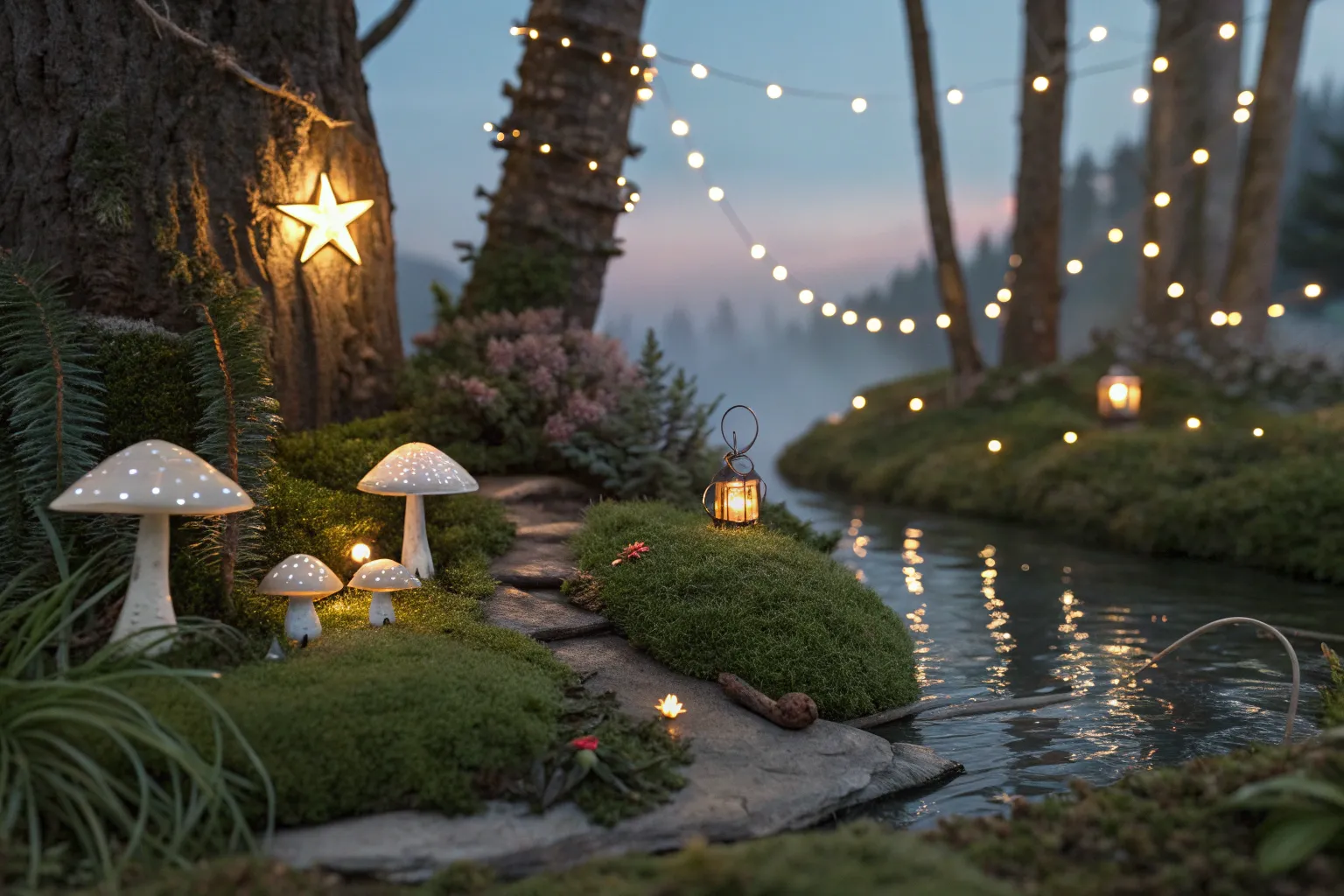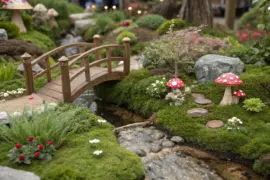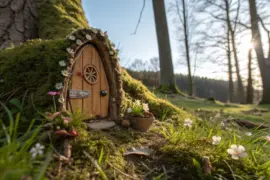The guide begins with the most essential element: finding your story. Rather than jumping straight into materials and techniques, it encourages you to imagine who lives in this miniature world and what narrative you want to tell. This story-first approach transforms fairy gardening from simple craft project into genuine world-building, making every choice—from containers to creatures—feel purposeful and connected.
Foundations and Structure

The guide emphasizes beginner-friendly container choices, recommending anything from terracotta pots and wooden crates to glass terrariums and vintage suitcases. For those just starting out, containers between 10 to 12 inches across provide enough space for creativity without becoming overwhelming. The distinction between indoor gardens (terrariums, glass jars, decorative bowls) and outdoor gardens (larger containers that weather naturally) helps readers choose the right approach for their space.
Building the foundation involves thoughtful layering: pebbles or gravel for drainage, quality potting soil, and structural supports for creating multi-level landscapes with hills and valleys. This creates visual depth and makes scenes more dynamic than single-plane designs.
Crafting Enchanted Structures

The heart of the guide focuses on handmade fairy homes that carry personality and charm. Four main approaches are detailed:
Log cabin-style twig houses use straight twigs of similar thickness stacked log-cabin fashion, with bark or additional twigs creating peaked roofs. The natural materials blend beautifully into outdoor gardens and weather well over time.
Stone cottages built from flat pebbles or small stones create sturdy structures perfect for outdoor settings. Shells, curved bark, or painted bottle caps become doors, while tiny pebbles arranged in arches suggest windows.
Painted birdhouse homes transform simple wooden birdhouses into whimsical dwellings with soft colors like lavender, mint green, or butter yellow. Natural embellishments—acorn caps along roof edges, pressed flowers, twig shutters—add personalized touches.
Upcycled treasures encourage creative thinking: terracotta pots turned upside down with door-shaped openings, teapots lying on their sides, large seashells, or hollowed pinecones.
Pathways and Landscapes
Pathways create movement through fairy gardens and make scenes feel inhabited and real. The guide explores multiple approaches:
- Pebble paths using small, smooth stones in single colors for clean, charming walkways
- Sand and gravel for beachy paths or dusty garden lanes, with colored sand adding whimsy
- Stepping stones made from flat stones, polymer clay discs, or thin wood slices from branches
- Small stones, twigs, or moss lines can edge pathways for a more finished appearance
Living Elements

Plant selection focuses on miniature scale and beginner-friendly care. Ground covers like Irish moss, Scotch moss, and creeping thyme create fairy “lawns” that spread gently and stay low-growing. Small succulents—particularly jade plants and hens-and-chicks—serve as miniature trees with their thick trunks and compact growth. For indoor gardens, air plants and small succulents thrive with minimal water and bright, indirect light.
The guide acknowledges that purely decorative gardens can use artificial flowers or polymer clay blooms, removing the pressure of plant care for those who prefer a maintenance-free approach.
Creatures and Characters

Keeping the content kid-friendly and approachable, the guide focuses on whimsical woodland creatures rather than anything dark or unsuitable for children. Polymer clay is presented as the ideal medium for beginners, with simple tutorials for creating toadstools (red caps with white dots), cheerful frogs (green ovals with bulging eyes), birds, snails, and butterflies.
Natural materials transform into magical beings: pinecones become owls or hedgehogs with added clay features, acorn caps turn into tiny bowls or hats, and twigs tied with twine create miniature ladders. Small figurines from dollhouse or model train sets add charming human elements—people picnicking, children flying kites, animals grazing—as long as scale remains consistent.
Magical Details

The guide encourages layering in accessories that bring scenes to life: twig furniture (benches, tables, chairs made from glued twigs or wire), miniature garden tools fashioned from twigs and wire, fences and borders from popsicle sticks or lashed twigs, and water features using mirrors, blue glass, or glass gems to represent ponds and streams.
Lighting transforms fairy gardens into something truly enchanting. Battery-operated fairy lights woven through plants, solar-powered miniature lanterns, glow-in-the-dark paint on clay toadstools, and miniature LED tea lights all add atmospheric magic, especially at dusk.
Care and Evolution
Practical maintenance guidance covers watering (thoroughly when soil feels dry, avoiding delicate roots), fertilizing quarterly at quarter-strength, pruning overgrown plants to maintain scale, and seasonal refreshing. The guide frames fairy gardens as living, evolving creations rather than static displays, encouraging swapping details, replacing plants, and rearranging accessories as inspiration strikes.
Thematic Inspiration
Five complete theme ideas spark imagination:
- Beach Fairy Garden: sand base, seashells, blue glass water, driftwood furniture, coastal succulents
- Enchanted Forest: layered moss and bark, toadstool clusters, twig cottages, woodland creatures
- Cottage Village: multiple small houses connected by pebble paths, miniature vegetable gardens, central square with bench and lamppost
- Secret Treehouse Garden: elevated design using stacked stones, small ladders, trailing ivy
- Desert Oasis: sand and gravel base, cacti and succulents, river rocks, clay desert animals
The guide closes with an invitation to embrace the never-finished nature of fairy gardens—how they grow and change as seasons shift and imaginations evolve. It emphasizes the deeper magic: slowing down, noticing beauty in small things, imagining stories, creating without rigid rules, and believing that something wonderful might be waiting just beyond the garden gate.
Written with accessible yet accurate crafting terminology, the guide maintains a warm, authentic voice that blends first-person reflections with direct guidance. It balances inspiration with instruction, offering specific techniques while leaving room for personal creativity and adaptation—exactly what both adults and older children need to transform simple materials into enchanted miniature worlds.





